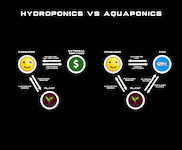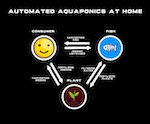
Selecting the appropriate air pump for your aquaponics system is essential for preserving a healthy environment for both plants and fish—a task that is, undoubtedly, more intricate than it might initially appear. With a myriad of factors to ponder, such as water height and oxygen needs, the right choice of air pump can truly be the difference between a flourishing ecosystem and a gurgling disaster. This article delves into the importance of aeration and water flow, juxtaposes membrane and piston air pumps, and provides savvy tips for their effective use and maintenance. So, take the plunge and ensure your aquaponics setup not only survives but thrives!
Choosing the Right Air Pump for Your Aquaponics System
Selecting the appropriate air pump for your aquaponics system can indeed resemble the daunting task of seeking a needle in a haystack. However, worry not! This pivotal choice can profoundly impact the vitality and efficiency of both your plants and fish, making it imperative to achieve an optimal balance among performance metrics, energy consumption, and noise levels.
Choosing the right size of an air pump for your system:
- Rule of Thumb:
- Provide at least 1–2 L/min per 100 liters of water for low to medium density.
- For higher densities, increase to 3–5 L/min per 100 liters or more.
- Aeration Efficiency:
- Fine-bubble air stones improve oxygen transfer, especially in high-density systems.
- Large-bubble air stones prioritize the water flow for current-loving fish.
- Additional Factors:
- Temperature: Warmer water holds less oxygen, so increase airflow in hot climates.
- Plant Load: Systems with heavy plant loads benefit from additional aeration to balance oxygen and CO₂.
- Backup System:
- For high or very high-density systems, always have a backup pump or generator to prevent fish loss during outages.
To help you determine the air pump size for aquaponics based on stocking density and system size I created a small table. Air pump capacity is typically measured in liters per minute (L/min) or gallons per hour (GPH).
|
Stocking Density (Fish Volume per Water Volume) |
System Size (Liters/Gallons) |
Minimum Air Pump Capacity |
Comments |
|
Low Density (<10 kg/m³) |
<500 Liter/ 132 Gallon |
2–5 L/min (32–80 GPH) |
Minimal oxygen demand; use small air stones. |
|
500–1000 Liter/ 132 - 264 Gallon |
5–10 L/min (80–160 GPH) |
Suitable for light stocking with plants. |
|
|
>1000 Liter/ 264 Gallon |
10–20 L/min (160–320 GPH) |
Ensure even air distribution. |
|
|
Medium Density (10–20 kg/m³) |
<500 Liter/ 132 Gallon |
5–10 L/min (80–160 GPH) |
Moderate aeration is needed for healthy fish and plant growth. |
|
500–1000 Liter/ 132 - 264 Gallon |
10–15 L/min (160–240 GPH) |
Use multiple air stones or diffusers for even coverage. |
|
|
>1000 Liter/ 264 Gallon |
20–30 L/min (320–480 GPH) |
Higher oxygen input is required. |
|
|
High Density (>20 kg/m³) |
<500 Liter/ 132 Gallon |
10–15 L/min (160–240 GPH) |
Heavy oxygen demand; use fine-bubble air stones for efficiency. |
|
500–1000 Liter/ 132 - 264 Gallon |
20–30 L/min (320–480 GPH) |
A high-flow rate pump with multiple outlets is recommended. |
|
|
>1000 Liter/ 264 Gallon |
30–50 L/min (480–800 GPH) or more |
Essential for maintaining oxygen levels in dense stocking environments. |
|
|
Very High Density (>40 kg/m³) |
Any size |
Custom system; >50 L/min (>800 GPH) |
Requires aeration systems combined with flow pumps to maximize oxygen and water flow. |
Whether your preference leans toward a membrane pump or a long-lasting piston air pump, grasping the specific requirements of your setup and recognizing how each pump’s design influences aeration and overall system performance is essential for cultivating a flourishing aquatic ecosystem. After all, a harmonious balance is the secret ingredient to creating an aquatic paradise!
Factors to Consider when Choosing an Air Pump
When selecting an air pump for your aquaponics system, weighing several factors that influence its functionality and effectiveness, including size, output capacity, and energy efficiency is imperative. An ideal air pump should not only fulfill the requirements for optimal oxygenation but also harmonize with your budget and environmental aspirations.
Particular attention should be directed toward the pump's flow rate and pressure capabilities, as these specifications dictate how efficiently the pump can deliver the vital oxygen that both fish and plants crave. Adjustable air pumps are often highly recommended, allowing users to tailor performance to their system's size and specific needs.
If your aquaponics system is in a living area, consider noise and adding insulation to dampen vibrations.
Ease of maintenance is another critical element, with minimal upkeep, piston air pumps thereby ensure sustainable operation for years to come. After all, a happy aquaponics system is a well-maintained one!
Importance of Aeration and Water Flow in Aquaponics
Aeration and water flow stand as the dynamic duo of your aquaponics system, wielding a significant influence over oxygen saturation—an absolute necessity for the thriving health of both fish and plants. The higher the height of your aquaponics system the more water flow will be created with your air pump. The more air you pump the more water flow is created. Another factor that influences the water flow and oxygenation is the airstone you choose. Too small bubbles tend to oxygenate better but reduce water and air flow while too big bubbles might be inefficient at aerating the water.
A strong water flow and aeration offer a better growth rate for your fish but also increase their perceived living area because they have to swim against the current constantly.
A meticulously optimized system guarantees that vital nutrients circulate with finesse, boosting growth rates and yields while creating a harmonious environment essential for aquatic life and the delicate balance of the ecosystem.
After all, in the world of aquaponics, it’s not just about keeping fish and plants alive; it’s about helping them flourish together, like a perfectly choreographed dance in the water.
Effects of Proper Aeration and Water Flow on Plants and Fish
Proper aeration and water flow are not merely technical terminology; they are, in fact, the very lifeblood of your aquaponics system, wielding a direct influence over the health of both your plants and fish. A well-balanced environment enhances oxygenation, which can significantly ramp up growth rates, vitality, and yield, allowing your aquatic ecosystem to thrive in delightful harmony.
When oxygen levels are finely tuned through effective aeration, plants become nutrient-absorbing champions, exhibiting enhanced growth and vigor. Meanwhile, fish enjoy the benefits of a consistent water flow that not only ensures high oxygen but also supports the filtration process, whisking away harmful waste products like carbon dioxide and offering bacteria oxygen to turn harmful ammonia into harmless nitrates.
This dynamic interplay creates an ideal environment for both plants and fish, fostering a balanced ecosystem where each component flourishes. Therefore, grasping the intricacies of oxygenation and filtration is not just beneficial; it’s essential for aquaponics enthusiasts who aspire to cultivate sustainable and productive systems.
Different Types of Air Pumps for Aquaponics
In the realm of air pumps for aquaponics, the options can be as diverse as the aquatic inhabitants of your tank! Among the leading contenders are membrane pumps and piston air pumps, each presenting a distinct set of advantages and disadvantages in terms of efficiency, noise level, and durability.
It becomes imperative to discern which model aligns best with your specific aquaponics configuration. After all, choosing the right air pump is akin to selecting the perfect fish food—essential for maintaining harmony in your aquatic ecosystem!
Membrane Pumps vs. Piston Air Pumps
When one embarks on a comparison between membrane pumps and piston air pumps, it becomes imperative to assess the advantages and disadvantages, as each type brings its unique charm to the discussion.
Here’s a table comparing piston air pumps and membrane (diaphragm) air pumps for easy reference:
|
Feature |
Linear Piston Air Pumps |
Piston Air Pumps |
Rotary Membrane (Diaphragm) Air Pumps |
Linear Air Pumps |
|
How They Work |
Combines a piston mechanism with electromagnetic linear motion. |
Use a piston moving inside a cylinder to compress air. |
Uses a rotary mechanism (like a motor and crankshaft) to drive the diaphragm. |
Uses electromagnetic linear motion to move the diaphragm back and forth. |
|
Noise Level |
Very quiet due to linear motion and fewer mechanical parts. |
Louder due to higher output, mechanical impact, and vibrations. |
Airflow may pulse slightly due to the rotary motion, less smooth output. |
Quieter due to fewer mechanical parts and smoother operation. |
|
Durability |
Highly durable; fewer wear-prone parts. |
More durable for heavy-duty applications, especially under high pressure. |
Less durable for heavy use but sufficient for smaller, low-pressure tasks. |
Designed for low to medium-pressure applications. |
|
Air Pressure |
Provides moderate pressure and high airflow consistency. |
Provides higher air pressure and volume. |
Lower air pressure and volume. |
Provides steady and consistent airflow suitable for continuous operation. |
|
Applications |
Suitable for aquaponics, large aquariums, ponds, and septic systems. |
Industrial use, large aquariums, or situations requiring high air output. |
Small aquariums, medical devices, or noise-sensitive environments. |
Ideal for indoor aquaponics, hydroponics, and ponds. |
|
Energy Efficiency |
Very energy-efficient, ideal for 24/7 operation. |
Slightly less efficient due to higher mechanical effort. |
More energy-efficient for small-scale tasks. |
Highly efficient, consumes less power for continuous use. |
|
Maintenance |
Nearly maintenance-free and very long-lasting (5-10 years). |
Nearly maintenance-free and very long-lasting (5-10 years). |
The diaphragm wears out faster and needs replacement (1–2 years). |
Low maintenance; diaphragms may need periodic replacement(1-2 years). |
|
Upgradability |
Expandable by adding another linear piston pump in series to work together. |
Expandable by adding another piston pump in series to work together. |
Would work against each other when used in series. |
Would work against each other when used in series. |
|
Noise Reduction Options |
Minimal noise reduction is needed; inherently quiet. |
Use vibration dampers, and soundproof enclosures (beware of overheating), or place on cushioned surfaces. |
Use vibration dampers, and soundproof enclosures, or place them on cushioned surfaces. |
Minimal noise reduction measures are needed due to the quieter design. |
|
Cost |
Most expensive but cost-effective over time and amortized quickly due to durability. |
Generally cheaper than linear pistons. |
Lower cost for basic models but the diaphragm needs regular replacement. |
Typically, it is more expensive upfront. |
|
Best For |
Medium to large systems need quiet, efficient airflow. |
High-power, large-scale applications where noise levels don’t matter. |
Small, low-power tasks. |
Noise-sensitive areas. |
This comparison should help you decide based on your specific needs!
Linear piston air pumps combine the piston mechanism with the quiet operation and efficiency of linear motion, making them highly reliable for moderate airflow needs. They excel in applications like large aquariums, ponds, aquaponics, and septic systems, where consistent and quiet operation is critical.
Membrane pumps are often lauded for their small-scale operation and energy efficiency, while linear piston air pumps take the crown for quietness, durability, and impressive pressure output, making the ultimate choice.
For instance, users frequently extol the virtues of membrane pumps, praising their smooth airflow and consistent performance.
On the other hand, piston air pumps are celebrated for their robust construction and remarkable ability to generate higher pressure levels, rendering them essential for most heavy-duty tasks.
Regarding efficiency ratings, many users discover that membrane pumps present a more energy-efficient alternative; however, the longevity and reliability of piston pumps can often justify the investment in high-demand scenarios.
Most individuals prioritize the tranquility of operation, the sheer power, and the ruggedness of linear piston models.
*As an Amazon Associate, I earn commission from qualifying purchases made through links in this post.*
|
Type |
Model |
Link |
GPH |
Watt |
Efficiency (GPH/W) |
Efficiency (GPH/$) |
Price in $ |
|
Linear Piston Air Pump |
Medo 28Watt Pond Linear Piston Air Compressor Max Depth 6ft. 115Volt |
583 |
28 |
20,82142857 |
2 |
244.88 |
|
|
Medo 45Watt Pond Linear Piston Air Compressor Max Depth 6ft. 115Volt |
808 |
45 |
17,95555556 |
2 |
334.99 |
||
|
Medo 60Watt Pond Linear Piston Air Compressor Max Depth 8ft. 115Volt |
1122 |
60 |
18,7 |
4 |
278.95 |
||
|
HugeHard MEDO LA-80BN Piston Air Pump |
1490 |
80 |
18,625 |
5 |
294.95 |
||
|
Medo LA-120 Piston Air Pump |
1903 |
120 |
15,85833333 |
4 |
450.00 |
||
|
Medo 215Watt Pond Linear Piston Air Compressor Max Depth 10ft. 115Volt |
4443 |
215 |
20,66511628 |
4 |
1119.99 |
||
|
Piston Air Pump |
AquaMiracle Aquarium Air Pump Commercial Air Pump 600/1000/1200/1750GPH, 18W/35W/58W/120W Air Pump for Fish Tank, Hydroponic Air Pump, Fish Tank Air Pump Bubbler Pond Aerator |
600 |
18 |
33,33333333 |
20 |
29.99 |
|
|
Kulife Aquarium Air Pump for Fish Tank, Fish Tank Air Pump Bubbler Pond Aerator, Hydroponic Air Pump, 650/1000/1250/1480/1780GPH Commercial Air Pump (650GPH-20W) |
650 |
20 |
32,5 |
22 |
28.99 |
||
|
Simple Deluxe with Adjustable Air Flow Outlets |
1189 |
58 |
20,5 |
26 |
45.09 |
||
|
VIVOSUN Commercial Air Pump 1427 GPH 55W 90L/min 12 Outlet for Aquarium and Hydroponic Systems |
1427 |
55 |
25,94545455 |
20 |
69.99 |
||
|
VIVOHOME Electromagnetic Commercial Air Pump 1750GPH 102W 12 Outlets 110V for Aquarium, Fish Tank Aquaponics and Hydroponic Systems |
1750 |
102 |
17,15686275 |
22 |
79.99 |
||
|
AquaMiracle Aquarium Air Pump Commercial Air Pump 600/1000/1200/1750GPH, 18W/35W/58W/120W Air Pump for Fish Tank, Hydroponic Air Pump, Fish Tank Air Pump Bubbler Pond Aerator |
1750 |
120 |
14,58333333 |
22 |
79.99 |
||
|
Diapragm Membran Air Pump |
Pawfly Aquarium 15-40 GPH Compact Air Pump Quiet Oxygen Aerator Pump with Air Stone/Nano Bio Sponge Filter Airline Tubing and Check Valve Accessories for 3-20 Gallon Buckets and Fish Tanks |
30 |
2 |
15 |
3 |
8.99 |
|
|
AQQA Aquarium Air Pump,3.5W 5W Dual Outlet Oxygen Pump with 2 Air Stone,Adjustable Air Valve Quiet Bubbler Pump,Up to 160 Gallon Fish Tank (3.5w) |
48 |
5 |
9,6 |
5 |
9.99 |
||
|
HITOP Dual Outlet Aquarium Electric Air Pump, Whisper Adjustable Fish Tank Aerator, Quiet Oxygen Pump with Accessories for 20 to 100 Gallon (2 outlets) |
79 |
3 |
26,33333333 |
5 |
14.97 |
||
|
FEDOUR 4W/5W/8W Aquarium Corded Electric Air Pump, 96GPH/160GPH/256GPH Dual Outlets 4 Outlets Oxygen Pump, Ultra Quiet Aquarium Bubbler for up to 300 Gallon Fish and Turtle Tank (4 Outlets-8W) |
256 |
8 |
32 |
9 |
26.97 |
||
|
INCLY 7W Aquarium Air Pump 245 Gallon with 4 Adjustable Filter Outlet, Commercial & Quiet Water Hydroponics Oxygen Bubbler for Fish Tank Pond Air Stone |
245 |
7 |
35 |
6 |
43.99 |
||
|
Pawfly 254 GPH Aquarium Air Pump Adjustable Quiet Oxygen Aerator Pump with Multi-Port Air Flow Control Lever Valve Splitter and Airline Tubing for Fish Tanks Ponds and DWC Systems Up to 300 Gallons |
254 |
7 |
36,28571429 |
7 |
38.99 |
||
|
AQUANEAT Aquarium Air Pump 300GPH, for up to 200 Gallon Fish Tank, Powerful Hydroponic Aerator Pump with Tubing, Air Stones, Air Valves |
300 |
8.5 |
30.12 |
12 |
24.95 |
||
|
AquaMiracle Pond Aeration Kit Koi Pond Aerator Pond Air Pump for Pond up to 15000 Gallons Pond Deicer All-in-One Pond Aeration System with Self-Sinking Airline Flow Control Rubber Air Diffuser |
792 |
25 |
31,68 |
3 |
298.99 |
||
|
Linear Membrane Air Pumps |
Hailea ACO9810 Super Silent Linear Air Compressor Pump - 30 LPH Air Flow |
476 |
25 |
19,04 |
5 |
98.00 |
|
|
HiBlow HP80 Septic Linear Air Pump (Longest Lasting Pump on The Market) w/Free Back Pressure Safety Valve |
1268 |
71 |
17,85915493 |
4 |
285.00 |
||
|
HIBLOW HP-80 Pond Aerator/ Septic Linear Air Pump |
1268 |
71 |
17,85915493 |
4 |
314.65 |
||
|
VEVOR Linear Air Pump, 109L/Min Air Flow Septic Aerator Pump, Aeration System for 1/2 Acre 10 FT Deep Ponds, Water Gardens, Waste Treatments, Septic Tanks, Aquariums, Seafood Restaurants, Fish Farms |
1728 |
75 |
23,04 |
12 |
149.99 |
||
|
AquaMiracle Linear Air Pump AP-40/AP-60/AP-80/AP-160 for Pond Aeration, Septic Air Pump, Hydroponic Air Pump, 635/950/1350/2550GPH, for Pond, Waste Treatment, Aquarium, Fish Farm, Seafood Restaurant |
2550 |
105 |
24,28571429 |
13 |
199.99 |
Combining Air Pumps with Water Pumps for Maximum Aeration and Water Flow
To achieve optimal aeration and water flow in an aquaponics system, the strategic combination of air pumps and water pumps can multiply the efficiency and be a transformative approach! This clever integration not only enhances circulation but also optimizes oxygen distribution, thus boosting overall efficiency. The result? Both aquatic plants and fish can thrive, living their best lives beneath and above the surface.
How to choose the right water pump for your aquaponics system.
This delightful partnership enriches the water with essential oxygen while effectively promoting the movement of nutrients throughout the ecosystem.
Such a method can create dynamic flow patterns that mimic natural environments with strong currents, stimulating the growth of fish and beneficial microorganisms.
This synergy not only prevents stagnation but also reduces the risk of harmful bacteria blooms, all while ensuring a consistent habitat for fish. By employing aeration techniques alongside water movement strategies, one can significantly enhance the overall health of the ecosystem, paving the way for a flourishing aquaponics system.
Combining Air Pumps with Air Stones for simple Aeration and Water Flow
|
Factor |
Options/Details |
|
System Size |
- Small (<10 gal): Small air stones (1–2"). |
|
- Medium (10–50 gal): Medium stones (2–4"). |
|
|
- Large (>50 gal): Large stones, diffusers, or multiple stones. |
|
|
Bubble Size |
- Fine Bubbles: Better oxygen transfer (hydroponics, delicate fish). |
|
- Large Bubbles: Stronger flow (decoration, water movement). |
|
|
Material |
- Ceramic: Durable, fine bubbles (ideal oxygenation for aquariums/hydroponics). |
|
- Plastic/Synthetic: Lightweight, basic setups. |
|
|
- Flexible Diffusers: Adjustable bubble patterns (large tanks, aesthetics). |
|
|
Pump Compatibility |
- Match the air stone's airflow needs (L/min or GPH) with the air pump’s capacity. |
|
Maintenance |
- Ceramic stones last longer but need cleaning (vinegar/bleach for mineral buildup). |
|
Purpose |
- Aquariums: Gentle bubbles for small fish comfort. |
|
- Hydroponics: Fine bubbles for plant roots. |
|
|
- Aquaponics: Large/dynamic bubble patterns for strong water flow and oxygenation. |
|
|
Shape |
- Round/Disc: Even bubble distribution (central placement). |
|
- Bars/Cylinders: Covers more area (edges or rectangular tanks). |
|
|
- Flexible Diffusers: Custom bubble designs. |
|
|
Budget |
- Basic stones: $1–$10. |
|
- High-quality/specialized diffusers: $15–$50+. |
Key Features for selecting Airline Tubing:
- Material: Usually made of clear PVC or silicone. Silicone is more durable and flexible, especially for long-term use but might accidentally release if not properly connected or the pressure is too high.
- Diameter:
- The standard size for most setups is 4 mm (inner diameter) or 6 mm (outer diameter), often referred to as 3/16-inch tubing.
- Larger systems may require wider tubing for higher airflow.
- Length: Comes in rolls or pre-cut pieces—ensure it's long enough to connect your pump to the air stone without kinks.
Optional Accessories:
- Check Valves #Important in case of Power Outage or Pump Failure: Prevent water from back flowing into the pump if it’s placed below the water level.
- T-connectors or Splitters: Allow multiple air stones to be connected to one pump.
- Air Valves: Regulate the amount of air going through the tube.
- Suction Cups: Secure the tubing to the tank walls for a neat and organized setup.
|
Type |
Model |
Link |
Price in $ |
|
Standard Air Stone |
Pawfly Aquarium Air Stone 1 Inch, Fish Tank Air Stone Aerator Bubble Diffuser for Nano Air Pumps Small Buckets and Fish Tanks, 10 Pack |
5.39 |
|
|
50 Pack 1 Inch Air Stone, Fine Aquarium Air Stones, Cylinder Bubble Diffuser Airstone Fish Tank Bubbler Air Pump Accessories for Aquariums Hydroponics Grey (50 Pack) |
9.99 |
||
|
Pawfly Aquarium 4 Inch Air Stone Cylinder for Larger Pumps Bubble Diffuser Release Tool for Buckets Fish Tanks Outdoor Garden Ponds and DWC Reservoirs, 4 Pack |
16.99 |
||
|
Disc Air Stone |
VIVOSUN Air Stone Disc 8 x 8 Inch with Shell and Sucker for Aquarium, Fish Tank and Hydroponics Air Pump |
19.99 |
|
|
Bar Air Stone |
Pawfly Aquarium 12 Inch Air Stone Bar Bubble Diffuser Release Tool with Suction Cup Clip Accessory for Air Pumps DWC Systems Fish Tanks and Small Garden Ponds |
9.99 |
|
|
Airline Tubing |
ALEGI Standard 3/16" Flexible Airline Tubing with Connectors for Aquariums, Terrariums and Hydroponics (100Feet) |
15.99 |
|
|
T Connector |
AQUANEAT Aquarium Airline Tubing Connector, Fish Tank Air Pump Connector, Plastic, 40Pcs (4 Kinds) |
5.99 |
|
|
Air Regulator |
AQUANEAT Aquarium Control Valve 20PCS,2 Way Air Valve,Fish Tank Air Flow Control Valves for 3/16" Airline Tubing, Plastic Air Regulator, for Aquarium Air Pump Accessories |
5.99 |
|
|
Check Valve |
AQUANEAT Aquarium Check Valve, One Way Non Return Valve for Aquarium Air Pump, Check Valve for 3/16 Inch Airline Tubing, Fish Tank Accessories, 10pcs (Red) |
5.99 |
|
|
Suction Cups |
AQUANEAT Aquarium Suction Cups, for Fish Tank Airline Tubing, with Clips 3/16" air Hose Holder, 24pcs (Clear) |
5.99 |
Using Air Pumps as Airlift Filter/Pump
Air pumps are also essential components for operating an airlift filter or pump in aquariums, aquaponics, and hydroponic setups. An airlift works by utilizing rising air bubbles to create water movement, offering a simple yet highly effective way to move and pump water without the risk of killing any small fish or other inhabitants, albeit with limited lift height above the water level, while providing oxygenation and filtration.
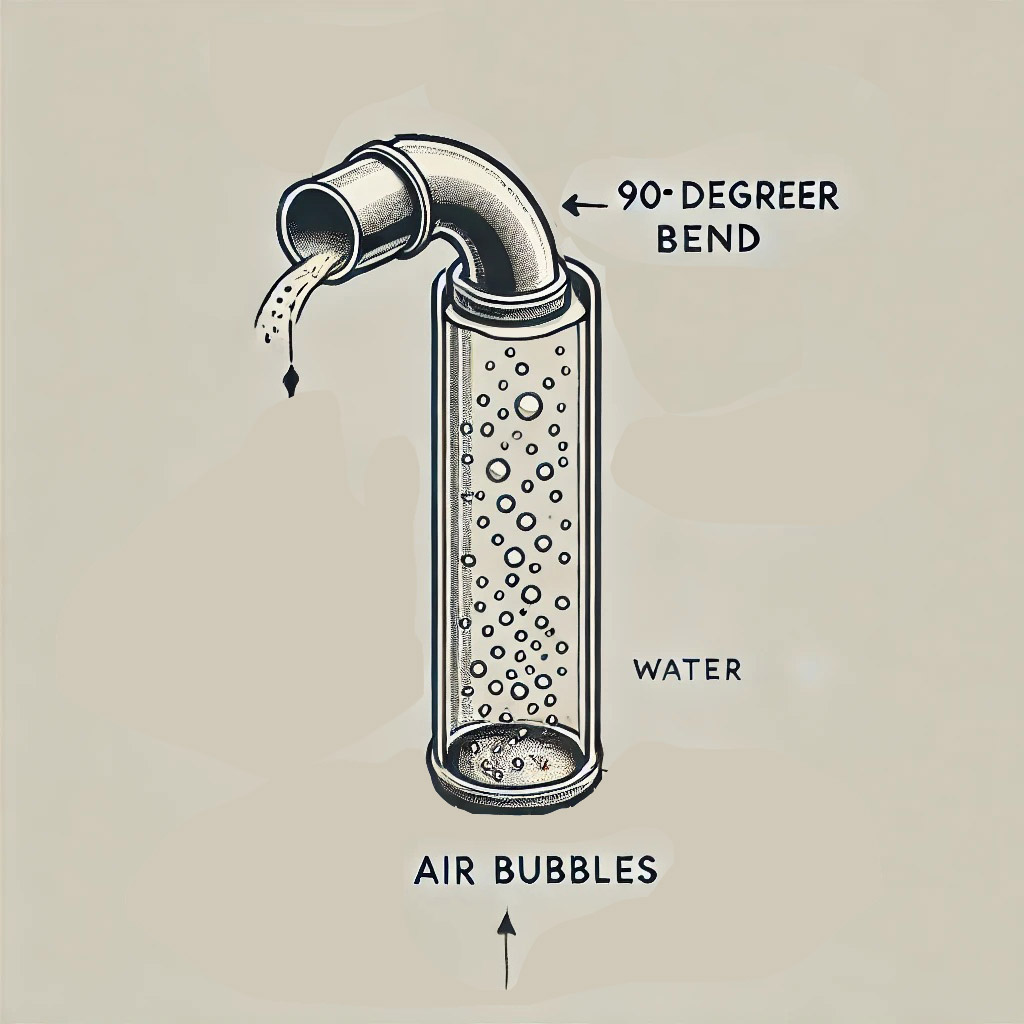
The core idea is straightforward: an air pump injects air into a submerged tube, creating bubbles that reduce the water's density inside the tube. This difference in density generates an upward flow, effectively lifting water and debris through the system. This design is both energy-efficient and low-maintenance, making it ideal for biofiltration and gentle water circulation.
For an airlift system, it’s important to choose an air pump with adequate capacity, measured in liters per minute (L/min), to match the diameter and depth of the tube. Deeper systems require more powerful pumps to overcome water pressure. A wider diameter needs more air to prevent water flowing back down.
Air pumps paired with an air lifter system excel in oxygenating water while maintaining a safe, quiet, and efficient operation. They are particularly useful for breeding tanks, shrimp setups, or aquaponics systems where both filtration and aeration are critical and the grow bed is not much above the water level. With minimal moving parts and no impellers, Luftheber systems ensure reliable water flow with reduced risk of clogging, making them a durable choice for long-term use.
Learn how to set up your own DIY aquaponics system completely automated.
Tips for Properly Using and Maintaining Your Aquaponics Air Pump
The proper use and maintenance of your aquaponics air pump are paramount for its longevity and efficiency, ensuring that your system operates as smoothly as a finely tuned Swiss watch. Think of it as the unsung hero of your aquatic ecosystem—without it, things can quickly become lifeless.
Regularly make sure the connections between the air pump and air stones are connected properly. Consider cable ties for higher pressure applications to prevent accidental release of airline tubing.
Monthly you should check on the airstone and clean it.
From installation advice to troubleshooting those pesky common issues, a dash of diligence can significantly enhance the health of your ecosystem and boost its performance, proving that even in the world of aquaponics, a little TLC can make a monumental difference.
Frequently Asked Questions
What is an Aquaponics Air Pump and why do I need one for my system?
An Aquaponics Air Pump is a device that pumps air into the water in your aquaponics system. It is necessary for your system because it provides oxygen to both the plants and the fish, promoting a healthy environment for both. Without it, the plants and fish may suffer from low oxygen levels, leading to poor growth and potentially death.
How do I choose the right Aquaponics Air Pump for my system?
When choosing an Aquaponics Air Pump, consider the size of your system, the number of fish and plants, and the desired water flow. It is recommended to choose a pump with a higher air output than the minimum requirement for your system. You should also ensure that the pump is energy-efficient and durable.
What is the importance of oxygen in an aquaponics system and how does the air pump help with this?
Oxygen is vital for the health of both plants and fish in an aquaponics system. The air pump helps to circulate and aerate the water, providing a constant supply of oxygen for both. This promotes healthy growth and prevents the buildup of harmful substances in the water.
What are the differences between membrane pumps and piston air pumps?
Membrane pumps use a vibrating membrane to push air through the pump, while piston air pumps use a piston to compress air and push it through the pump. Membrane pumps are typically smaller and more energy-efficient, while piston air pumps are more powerful and suitable for larger systems.
How does the height of the water affect the choice of air pump?
The height of the water in your aquaponics system can affect the choice of air pump as it determines the pressure needed to push air through the water. For taller systems, a stronger pump with higher pressure is needed to ensure proper aeration and circulation. It is important to consider this when choosing an air pump for your system.
Can I combine an Aquaponics Air Pump with a water pump for maximum aeration and water flow?
Yes, it is possible and recommended to combine an air pump with a water pump in your aquaponics system. The air pump will provide oxygen and the water pump will help to circulate and aerate the water. This combination can lead to maximum aeration and water flow, promoting a healthy environment for your plants and fish.







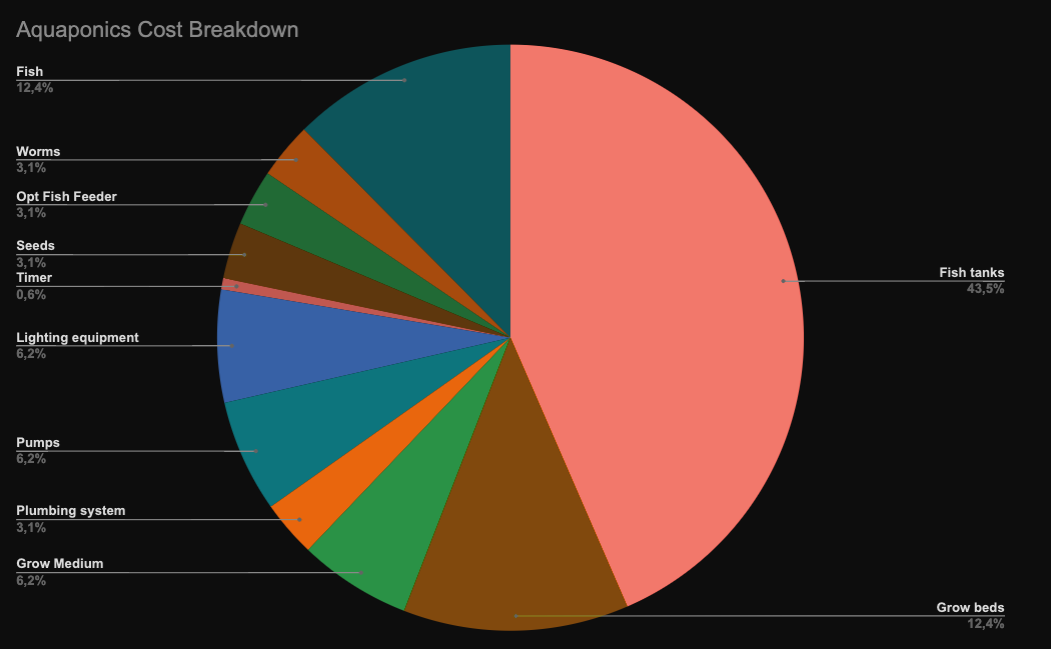
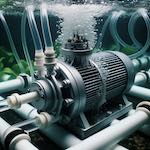
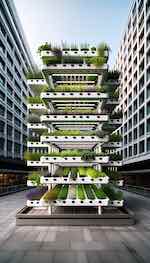
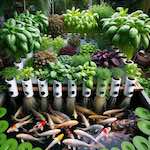
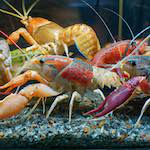
.jpeg)
